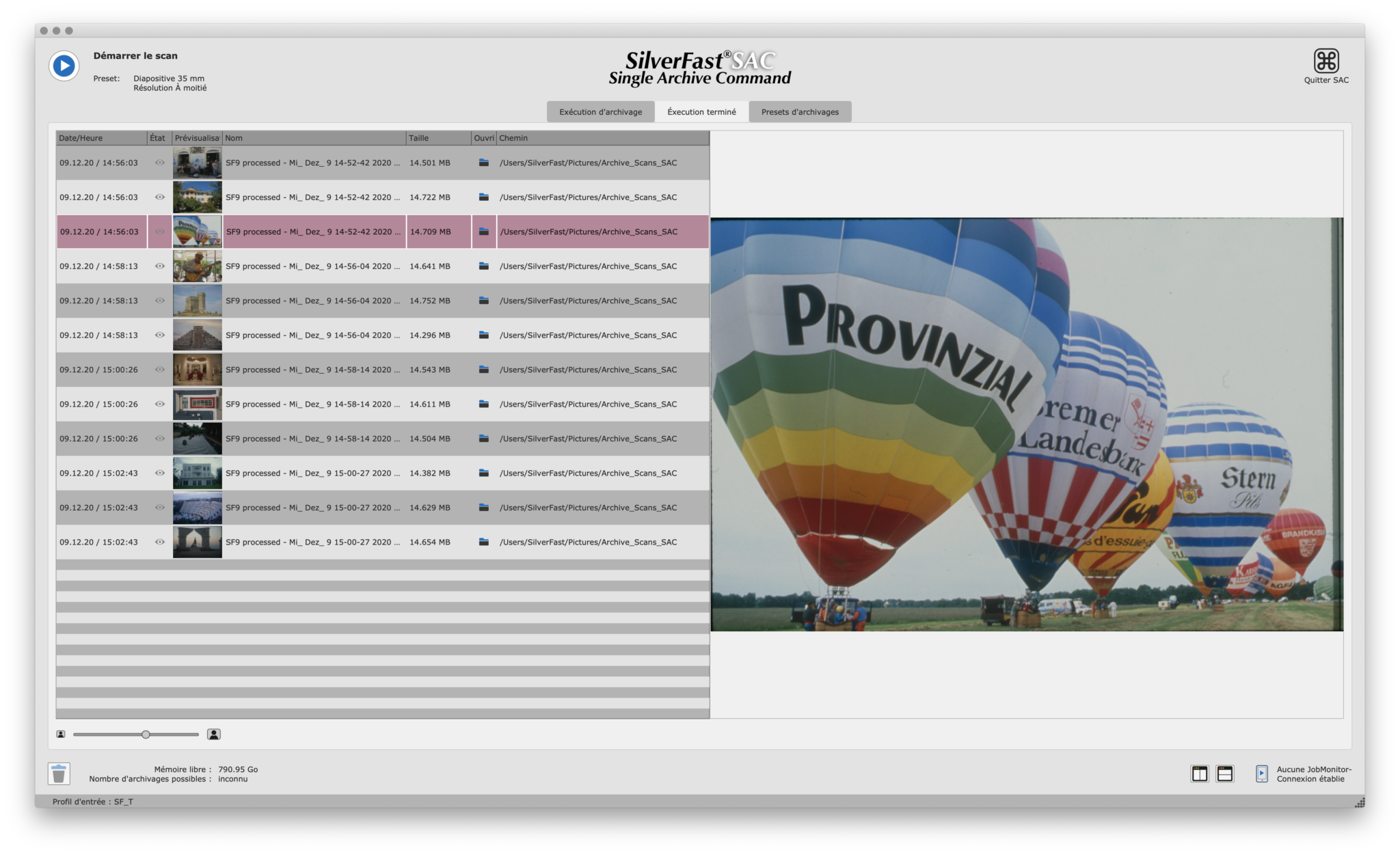
How are the profiles of different IT-8 targets handled?.How long does an IT-8 target keep its original quality?.How is it possible to recognize the type of film of an IT-8 target?.Are there IT-8 targets for Kodachrome-films available?.Which IT-8 Target should be chosen, Kodak or Fuji?.Problem: SilverFast cannot find any Reference Data File.Where are the reference files for IT-8 targets of SilverFast available?.

How often should the IT-8 calibration be accomplished in a scanner?.How is the IT-8 colour calibration accomplished in practice?.Which advantage does the IT-8 colour calibration offer?.Where is the multiple scan function at SilverFast 8?.What are the advantages of the NegaFix dialogue scanning negatives?.Which kind of quality increase does IT-8 calibration provide?.Which kind of quality increase does MultiExposure provide?.Examples of the increasing image quality by SilverFast.Is it possible to test SilverFast 8 befor purchasing?.Is the SilverFast 8 delivered with a good user manual?.Are there SilverFast upgrades from one to another scanner?.Where are the SilverFast updates available and how much do they cost?.Can two SilverFast-versions be installed simultaneously on one PC?.Is the SilverFast-licence applicable to several scanners?.Why does the price for SilverFast differ from scanner to scanner?.For which scanner models is SilverFast available?.
#Srdx silverfast archive#
#Srdx silverfast upgrade#
#Srdx silverfast software#
Please consider that in our Forum there is also a special area for the scan software SilverFast. On this page, we have collected numerous questions and answers related to the scan-software SilverFast of the German company LaserSoft Imaging. Almost every scanner, even those which have disappeared from the market a long time ago, can be operated with SilverFast. SilverFast is the worldwide leading software for film scanners and flatbed scanners. To do this, just draw a larger polygon around the existing one.For all current scanner models, SilverFast is avaliable in our Filmscanner-Shop. This can be used to remove parts of existing polygons, as well as entire polygons. In areas that are drawn using the quill tip setting Subtract, SRDx will no longer be applied. The settings on the sliders in the SRDx tool palette will then apply to all polygons in the same way. If another shape is to be drawn, then select Add from the menu. The cursor indicates this by turning into a closed circle. The mask is complete when another click on the first point closes the polygon. This allows a mask to be created with great precision in any possible shape. That could happen, for example, if the tool has to be set to a very high setting to repair particularly severe defects.Ī polygonal mask is drawn in exactly the same way as drawing in a vector drawing program: one click sets a corner point, while clicking and dragging generates a Bezier curve. By using a mask, you can ensure that SRDx is only used in the area affected, and that other parts of the image will not accidentally be damaged by SRDx. Scratches located in a homogeneous area such as in the example picture may be irritating, but they are very easy to remove with SilverFast 8. After clicking while holding Cmd and Shift down, the infrared image can be examined in case the scanner has infrared capabilities. SilverFast 8 displays the detected defects to allow the user to set the slider so that just the required amount of correction can be applied. The Mark setting is very useful for adjusting the sliders. In the 1:1 preview, the Display menu can be used to adjust whether the original image or the repaired image should be shown. This frame can be moved with the mouse to check the effect of SRDx on all the sections of the image. Click the "1:1" button to open the navigator window, in which a yellow frame marks the current image section. The effect of SRDx can be monitored in the 1:1 preview on the monitor.

It is important to adjust the desired resolution, the zoom factor, and the dimensions of the picture before calling SRDx. SilverFast offers the SRDx tool (Smart Removal of Defects) for this purpose. If larger defects such as scratches or dust mar the picture, they should be removed after sharpening and before the final scan.


 0 kommentar(er)
0 kommentar(er)
